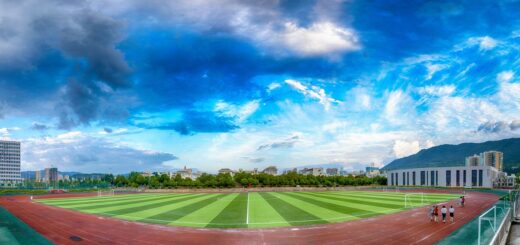Technological Disruptions in Athlete Development
Technological Disruptions in Athlete Development
Technological advancements have revolutionized various aspects of human life, and sports and athlete development are no exceptions. From training techniques to performance analysis, technology has significantly enhanced how athletes train, compete, and recover. This article explores the key technological disruptions in athlete development, providing insights into their impact and future implications.
1. Wearable Technology
Wearable technology has become ubiquitous in sports, offering real-time data on athletes’ performance and health metrics. Devices like smartwatches, fitness trackers, and even smart clothing provide invaluable insights into vital signs, movement patterns, and biomechanics. For instance, the use of GPS-enabled devices allows coaches and trainers to monitor athletes’ speed, distance covered, and acceleration during training sessions or competitions.
According to a study by Grand View Research, the wearable technology market in sports is expected to grow significantly, driven by the demand for advanced analytics and injury prevention. These technologies not only help in optimizing training routines but also aid in early detection of potential injuries, thereby enhancing overall athlete longevity and performance.
2. Virtual Reality (VR) and Augmented Reality (AR)
Virtual Reality and Augmented Reality have revolutionized training methodologies by creating immersive environments for athletes. VR simulations allow athletes to experience game scenarios in a controlled setting, improving decision-making under pressure. AR, on the other hand, overlays digital information onto the real world, offering instant feedback on techniques and performance metrics.
Organizations like the NFL and NBA have integrated VR into their training programs to simulate game scenarios and enhance cognitive abilities. For example, the STRIVR Labs platform has been adopted by various football teams to provide quarterbacks with realistic game scenarios for practice.
3. Biomechanics and Motion Analysis
Advancements in biomechanics and motion analysis have enabled detailed assessment of athletes’ movements and techniques. Technologies such as motion capture systems and 3D analysis software allow coaches and sports scientists to analyze every aspect of an athlete’s motion, from running gait to golf swing mechanics.
Case in point, the Australian Institute of Sport utilizes biomechanical analysis to refine athletes’ techniques in sports like swimming and athletics. By identifying inefficiencies and optimizing movement patterns, athletes can achieve peak performance while minimizing the risk of injury.
4. Big Data and Analytics
The proliferation of data analytics has transformed how coaches and teams strategize and prepare for competitions. Big data analytics processes vast amounts of data generated from sensors, wearables, and video recordings to uncover patterns and trends that were previously inaccessible.
Major sports leagues, including the NBA and Premier League, utilize data analytics to scout new talent, optimize game strategies, and prevent injuries. For instance, NBA teams like the Golden State Warriors have employed data analytics to assess player performance metrics and develop personalized training programs.
5. Personalized Nutrition and Recovery
Technology has also revolutionized athlete nutrition and recovery protocols through personalized recommendations based on individual data and performance metrics. From wearable hydration monitors to DNA-based nutrition plans, athletes can now optimize their dietary intake and recovery strategies for enhanced performance.
Organizations like the U.S. Olympic Committee use advanced nutrition tracking technologies to tailor meal plans and hydration strategies for athletes competing in various sports disciplines. This personalized approach helps in maximizing energy levels and accelerating post-training recovery.
Conclusion
Technological disruptions in athlete development continue to evolve, offering unprecedented opportunities for enhancing performance, preventing injuries, and personalizing training regimens. As these technologies become more integrated into sports culture, the future holds promising advancements in how athletes train and compete.
By leveraging wearable technology, virtual simulations, biomechanical analysis, data analytics, and personalized nutrition strategies, athletes and sports organizations can unlock new frontiers in performance excellence and competitive edge.
As we look ahead, the synergy between technology and sports will undoubtedly redefine the boundaries of human athletic potential.


